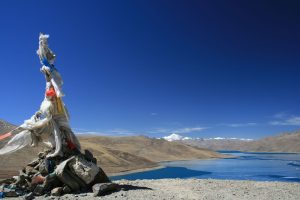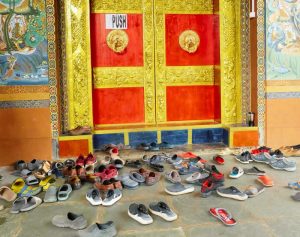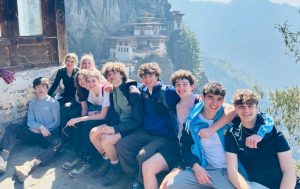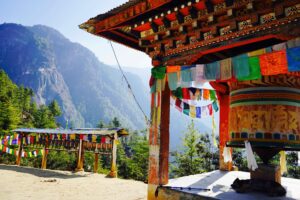Temples, Paro Dzong and Learning History
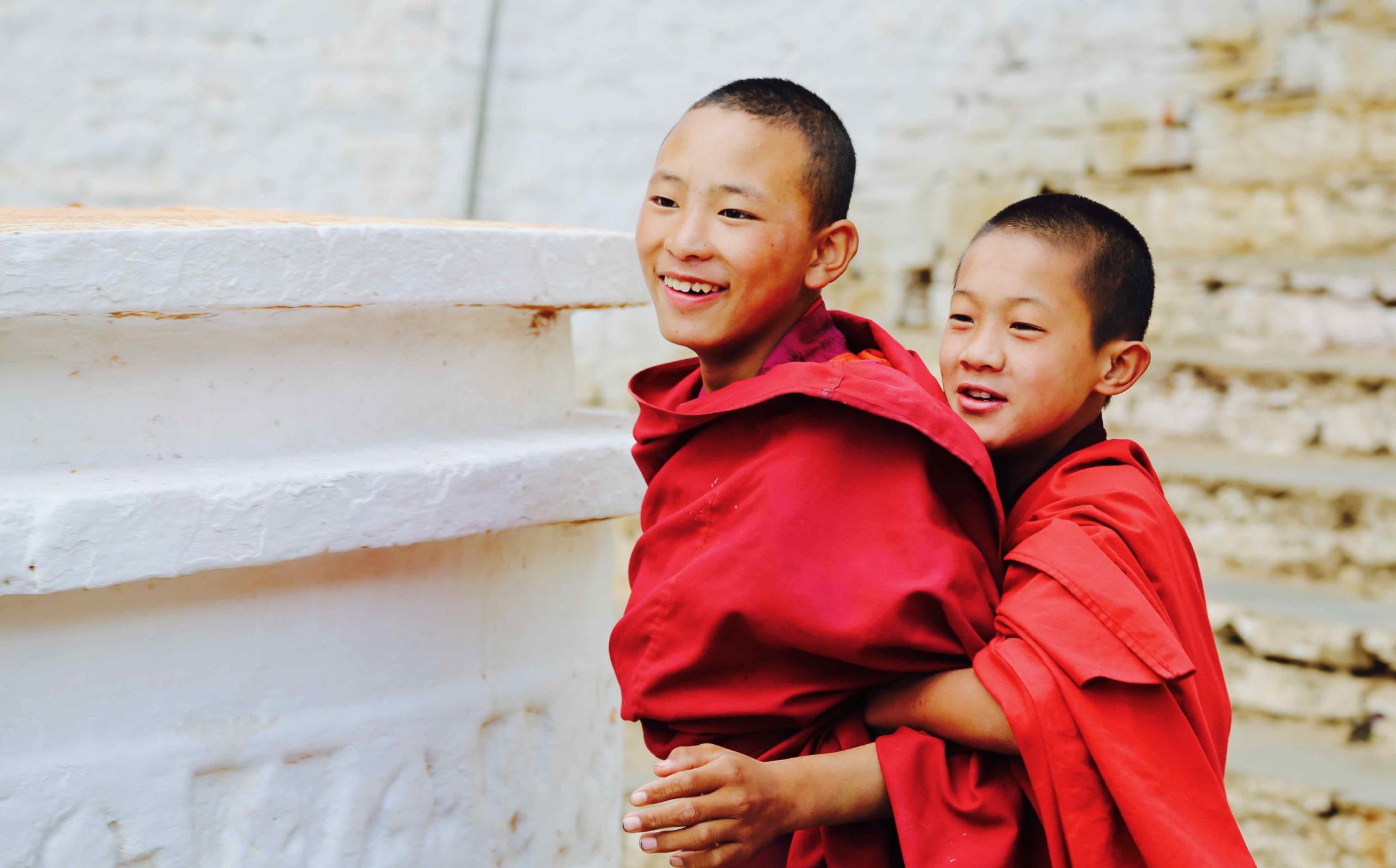
To start with, we would just like to clarify that for the safety of the group due to the snow that fell before our arrival in the country, we did not visit Chele La Pass today. We are giving it a few more days to thaw up there! Instead we did the activities intended for our last full day. The Chele La Pass will most likely be visited after our trek.
We started off the day with a chilly morning and lovely breakfast at the hotel restaurant. We then visited the National Museum of Bhutan which taught us about the long preserved cultural and historic aspects of Bhutan. The original National Museum is in a Bhutanese watch tower, but due to an earthquake in 2011, the exhibits had to be moved to a newer hall on the property. The museum had many educational and interesting artifacts, like traditional wooden masks, statues and tapestries mixed with environmental displays. This included taxidermy of local animals, rocks and plants from around the country. One of the displays I was really interested in was the pair of stuffed snow leopards they had on display. This was particularly interesting since they are incredibly endangered with only a few remaining in the wild. It was both interesting and sad for me as I am almost certain that I will never see a live one. The view from the museum’s look-out was amazing.
After a short drive down a hill with a magnificent view, we visited The Paro District Dzong. Outside the main area, there was a group of men practicing a ceremonial dance for a traditional celebration that occurs in April. It was truly special to see such an ancient tradition preserved and remembered by people today. In the Dzong, it was eye-opening to see such a unique atmosphere. All the monks were smiling and happy, and in total harmony with their religion and traditions. The Dzong was split in half – one half was for the monks to practice their religion in calmness, and the other half was used for Government offices. Because of the shared space between people of completely different authority, this showed us how people can get along in any situation if they have the will.
In the afternoon we visited the oldest temple in Bhutan which was built in the 7th century, hundreds of years before Buddhism became popularized. It was awe-inspiring to see something so old yet so well preserved. One of the really interesting things we saw was the footprints of a monk who had done a hundred thousand prostrations (prayer-like motions where the participant offers themselves up to their deity by kneeling down) in one spot to the point where his two bare feet wore down the wood and left footprints. We also got to witness part of a prayer ceremony that some monks were performing with horns and cymbals. This was inspiring and very much made us feel like we were part of something bigger even though we only got a very small glimpse into their religious practices.
Early tomorrow morning we head off on our trek and night of camping, with a descent the following day to Tiger’s Nest.
Cow sightings: 30
**Please note that we are working on loading photos when we can, but the internet is very slow and we are having some technical difficulties. We will do our best to post more after our trek in a few days.

